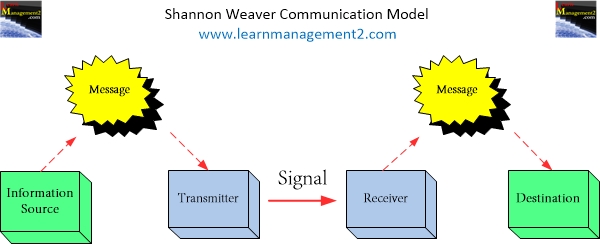Communication And Business Communication
Introduction
Firms need to communicate effectively with everybody who comes into contact with the firm and people that they would like to attract. This includes
- Employees
- Customers/Clients
- Media (Journalists, broadcasters etc)
- Government Representatives
- Marketing Agencies
- Suppliers
Communication will be tailored to suit the audience but all communication should reflect the organisation. Communication should be clear and use resources efficiently. Above all communication should get your audience's attention quickly and retain it for as long as possible.
What is Communication
Communication has various forms but all involve the transfer of information from one party to the other; for the transfer of information to qualify as communication, the recipient must understand the meaning of the information transferred to them. If the recipient does not understand the meaning of the information conveyed to them, communication has not taken place.
Why is Communication Important?
Communication is an organisation's life blood because organisations involve people. People cannot interact with each other without communication. In the absence of communication, everything would grind to a halt and lead to many problems including
- The workers in an organisation would not know the organisation’s objectives so they would not strive to achieve the organisation’s objectives.
- The workers in an organisation would not know what their roles and responsibilities were so they wouldn't be able to carry out their duties
- It would be difficult to train workers and provide them with the skills they need
- Employees wouldn't know about changes that affect them
- The organisation wouldn't know about competitor activities
- The organisation would find it difficult to tell customers and suppliers about things they would like them to know.
The list is endless................
Communication Methods
The manner in which we communicate can be put into one of 3 groups:
- Oral (Interpersonal) Communication
e.g. face to face, video conferencing, video logs (VLOGS) on the internet, telephone, television and radio.
- Written
e.g. letters, faxes, emails and digital communication through messenger apps, social media, blogs and websites.
- Non - Verbal i.e. body language
Communication Models
The communication process has been mapped out in a number of different communication models. Communication models have been around a long time, they can even be traced back to the Greek philosopher Aristotle. Communication models attempt to show how a message is delivered from the message sender to the message receiver. Claude Shannon and Warren Weaver‘s model is the usual starting point when discussing communication models. This model was constructed for the use of telephones but over time it has been adapted to explain face to face conversations. The first step requires something (or someone) to produce a message; this is called the information source. The message is turned into a signal by a transmitter and sent to a receiver. The receiver's job is to decode the signal back into a message so that it can be understood by the person (or thing) that the message was sent to i.e. the destination. The last element to remember is noise which is something that can affect the communication process and slow down or distort the message. Noise can occur at any point in the communication process. Other communication models include Berlo's SMCR model where he splits the communication process into source, message, channel, receiver and Schramm's communication model which includes encoding and decoding the message. We will cover each of these in new articles coming very soon.
Marketing Communication Models
There are a number of communication models specifically for marketing purposes. Our sister website www.learnmarketing.net has a number of articles explaining each one. Click on the links below to access them
Hierarchy of Effects
AIDA
Customers and Media Strategy
Firms often draw up plans detailing how they will communicate with customers and parties outside the organisation; these plans are part of the organisation's media strategy. An organisation's media strategy will include marketing plans and the format (look and feel) for all types of communication. A media strategy can be very specific and go beyond specifying organisational branding and include templates for letters and e-mails, detail use of language and task a specific department (media relations) to deal with external communications. Media strategies aim to send consistent messages to everybody that has contact with the organisation. They also aim to build brand identity and enhance corporate reputation.
Click on this link to learn more about media strategy and corporate messages.
Conclusion
Successful organisations understand the importance of effective communication. As we have discussed a failure in communication will impact on many things inside and outside the organisation. Bearing the importance of communication in mind, many theorists have mapped out the communication process in the hope that it will reveal how to achieve effective communication. Understanding the communication process is only the starting point the next step is to implement and maintain effective communication in your organisation.
